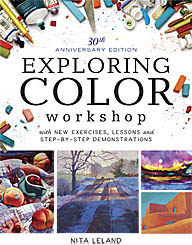Yesterday I went to the opening of the
Dayton Society of Painters and Sculptors spring show. It was cold and blustery outside, but inside the 48 High Street Gallery it was warm and companionable. There was a fantastic crowd there for the opening of the show, but also to see recent renovations to the historic building housing the gallery. The exhibit space is elegant and a far cry from what it has been for many years. The show itself is very good, although a mixed bag with some works that aren't that good, in my opinion. I understand that nearly sixty artists entered the show, with many bringing the limit of three works. Around eighty-nine paintings were selected, so there were a lot of rejects.
One situation was particularly interesting. I wonder what you think of this. An artist entered a pastel diptych, but because together they were too wide for the limitations placed on entries, he entered them separately. One half got in the show and the other was rejected. The one that got in won a ribbon--third place, I think. The mat surrounded the entire diptych, so where the two pieces were to hang together, there was no mat. The three-sided mat looked a bit strange. The artist implied that the judge was weird to accept one and reject the other of two pieces of the whole. In my opinion, it was his fault for trying to evade the size limitation. In fact, if both had been accepted, it would have been the prerogative of the hanging committee to hang them separately if they wished, as they were entered individually.
I tend to be pretty strict about artists obeying the rules of a show. When I judge a show, I expect the committee to vet the work and remove anything that doesn't comply with their rules. Invariably, something comes up. In one show the artist used collage, which was specifically disallowed, but you couldn't tell it from the slide. When the piece arrived, it was not hung. In another show, an artist sent a colorful painting matted in black. Included was a note saying that she hoped this was okay, since black is a neutral. She knew full well that the prospectus meant white or off-white, but she also knew her painting would look better in a black mat. The committee caved and allowed the painting to hang. Interestingly, I've never seen this violation--a black mat--in any show, before or since, so I'm quite sure artists understand what is meant by "neutral" in the prospectus. As it happened, I knew that this artist had bent the rules in two other shows, so her claim that her husband had taken it to the framer and she didn't know until it was too late to change it rang hollow to me. The moral to this story is "follow the rules." It isn't fair to make committees and judges disqualify paintings when you already know they don't comply.
Labels: exhibitions, oil painting
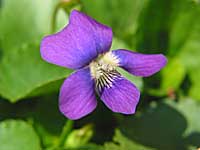 Yesterday we walked through the woods and picked violets and lily-of-the-valley. Jenna held them tightly and kept sniffing the fragrance of her bouquet. She said the flowers smelled pretty. She had a bouquet four or five inches in diameter before we finally took them inside and wrapped the stems in a paper towel and immersed them in a paper cup filled with water. They were still fresh when she and her mother took them home. I wish I had a picture of Jenna sniffing the violets, but I didn't want to spoil the mood by rushing inside to get my camera. The moral to this story is to be sure I have my camera--at least the little pocket Nikon--whenever I'm with her.
Yesterday we walked through the woods and picked violets and lily-of-the-valley. Jenna held them tightly and kept sniffing the fragrance of her bouquet. She said the flowers smelled pretty. She had a bouquet four or five inches in diameter before we finally took them inside and wrapped the stems in a paper towel and immersed them in a paper cup filled with water. They were still fresh when she and her mother took them home. I wish I had a picture of Jenna sniffing the violets, but I didn't want to spoil the mood by rushing inside to get my camera. The moral to this story is to be sure I have my camera--at least the little pocket Nikon--whenever I'm with her. 
 Carol Haefner's
Carol Haefner's 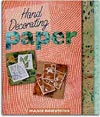 Searching for information on making paste paper, I found
Searching for information on making paste paper, I found 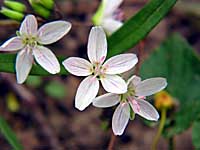 I honestly thought the woods was doomed when we had the alternating heat-and-freeze weather attacks the past few weeks. Even the may-apples looked like boiled cabbage. Things seem to be blooming in strange sequences, though. Some early bloomers like spring beauty are only now showing up. Happily, most things seem to have bounced back and the woods is beautifully abloom. The bluebells are spreading, so instead of one patch by the patio, there are now splotches of blue throughout the woods. I planted some wild blue flox a couple of years ago and they are finally blooming. There is another patch that I think might be from dormant seeds of the ones that we enjoyed years ago. The entire woods used to be filled with phlox until the honeysuckle took over. I'm still patrolling to keep the honeysuckle from coming back and to prevent the
I honestly thought the woods was doomed when we had the alternating heat-and-freeze weather attacks the past few weeks. Even the may-apples looked like boiled cabbage. Things seem to be blooming in strange sequences, though. Some early bloomers like spring beauty are only now showing up. Happily, most things seem to have bounced back and the woods is beautifully abloom. The bluebells are spreading, so instead of one patch by the patio, there are now splotches of blue throughout the woods. I planted some wild blue flox a couple of years ago and they are finally blooming. There is another patch that I think might be from dormant seeds of the ones that we enjoyed years ago. The entire woods used to be filled with phlox until the honeysuckle took over. I'm still patrolling to keep the honeysuckle from coming back and to prevent the 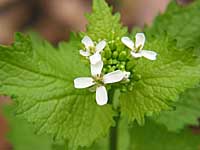 garlic-mustard from going to seed. I only find one or two now, which is so amazing when you consider that the woods was choked with both five years ago when I started this project. I did find colonies of flowering garlic-mustard under the huge fir trees last night. They are very sneaky and were hiding in there. They're history now.
garlic-mustard from going to seed. I only find one or two now, which is so amazing when you consider that the woods was choked with both five years ago when I started this project. I did find colonies of flowering garlic-mustard under the huge fir trees last night. They are very sneaky and were hiding in there. They're history now. 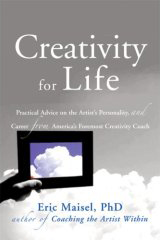 In his new book,
In his new book,  Bayles and Orland's book
Bayles and Orland's book  Recently I reread
Recently I reread  We read a lot about Vincent van Gogh and his relationship with his brother, but not much is said about Theo and his personal life and how his interactions with Vincent affected him. In
We read a lot about Vincent van Gogh and his relationship with his brother, but not much is said about Theo and his personal life and how his interactions with Vincent affected him. In 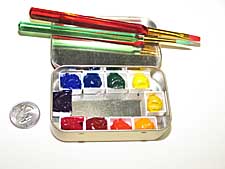 I finally found a use for my mini Altoid palettes. Today I visited an artist friend who is in rehab for a serious illness. She can't walk yet, but until she can, she is able to sit in a chair and chat or read. Dottie is a painter of bright, sunny watercolors and I would love to see her painting again soon. I gave her one of my Altoid boxes, several small brushes, a 5" x 7" pad of 140# watercolor paper, and an empty box for water. Everything fit into two small Ziploc bags. Her eyes lit up when she saw the paints.
I finally found a use for my mini Altoid palettes. Today I visited an artist friend who is in rehab for a serious illness. She can't walk yet, but until she can, she is able to sit in a chair and chat or read. Dottie is a painter of bright, sunny watercolors and I would love to see her painting again soon. I gave her one of my Altoid boxes, several small brushes, a 5" x 7" pad of 140# watercolor paper, and an empty box for water. Everything fit into two small Ziploc bags. Her eyes lit up when she saw the paints. 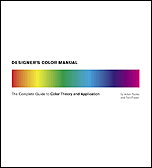 Subtitled "The Complete Guide to Color Theory and Application," Tom Fraser and Adams Banks's book
Subtitled "The Complete Guide to Color Theory and Application," Tom Fraser and Adams Banks's book  Dennis Prager's insightful book,
Dennis Prager's insightful book,  Caroline Jasper's
Caroline Jasper's 
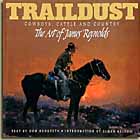
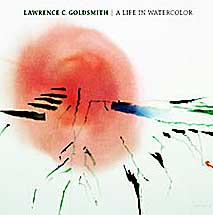

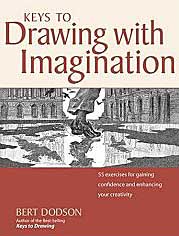 Bert Dodson, author of my favorite drawing book,
Bert Dodson, author of my favorite drawing book, 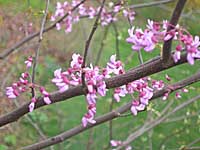 The first year of our woodland restoration we planted ten bareroot twigs that were supposed to be redbud trees in a little grove just past the end of the driveway. We've been waiting patiently all this time. Two of them died and a couple look puny. This year we were rewarded with our first blossoms on the biggest tree almost four feet tall now.
The first year of our woodland restoration we planted ten bareroot twigs that were supposed to be redbud trees in a little grove just past the end of the driveway. We've been waiting patiently all this time. Two of them died and a couple look puny. This year we were rewarded with our first blossoms on the biggest tree almost four feet tall now.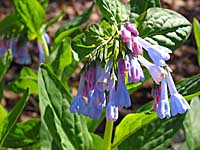 I can't believe how cold it seems today. Yesterday, too. Monday it was nearly eighty and now it has gone below freezing at night. The daffodils were conked this morning. Some of them raised their heads as the day warmed marginally. But the wildflowers--celandine poppy and bluebells, for example--are merrily blooming as they are blown sideways by high winds. As for me, I just want to wrap myself up in fleece and wait for a permanent call to Spring. I don't mind cold weather a bit--in its place. It never seems right in April--although we get it every year; you'd think I'd be used to it by now. Pity the poor Easter bunny. No wonder he has a fur coat.
I can't believe how cold it seems today. Yesterday, too. Monday it was nearly eighty and now it has gone below freezing at night. The daffodils were conked this morning. Some of them raised their heads as the day warmed marginally. But the wildflowers--celandine poppy and bluebells, for example--are merrily blooming as they are blown sideways by high winds. As for me, I just want to wrap myself up in fleece and wait for a permanent call to Spring. I don't mind cold weather a bit--in its place. It never seems right in April--although we get it every year; you'd think I'd be used to it by now. Pity the poor Easter bunny. No wonder he has a fur coat.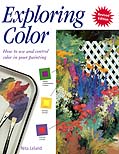
 Yesterday I showed my class a
Yesterday I showed my class a 

